Central America includes all of the countries located between Mexico and Columbia. This includes Belize, Guatemala, El Salvador, Honduras, Nicaragua, Costa Rica and Panama. The tropical climate and rainforests in Central America provide habitats for millions of species of plants and animals. The lakes in Central America are home to hundreds of fish species and waterfowl. They also are enjoyed by the locals and visitors alike. One lake is surrounded by volcanoes and another is filled with sharks (well, some sharks). Let’s look at the eight largest lakes in Central America.
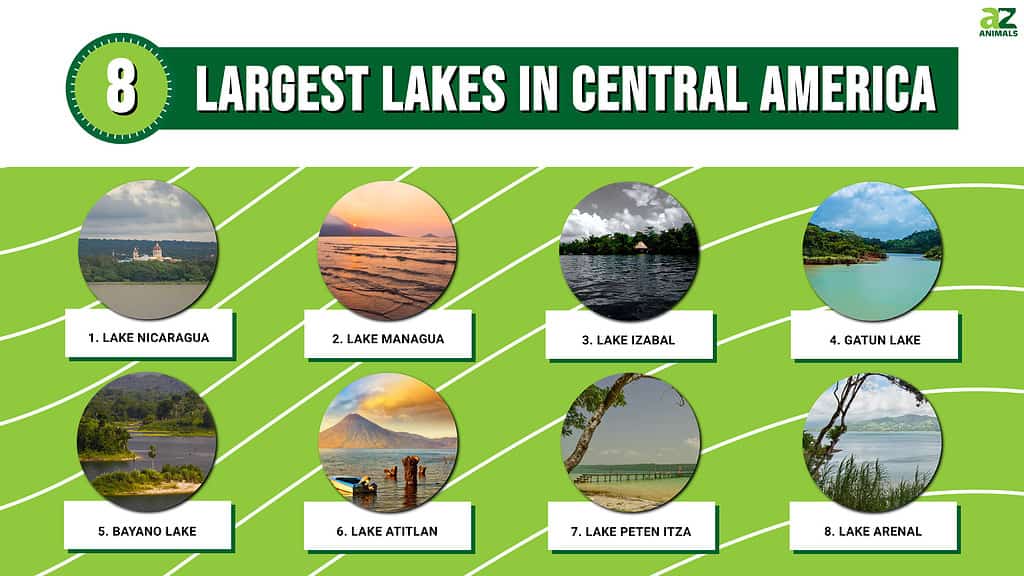
8. Lake Arenal, Costa Rica — 33 mi²
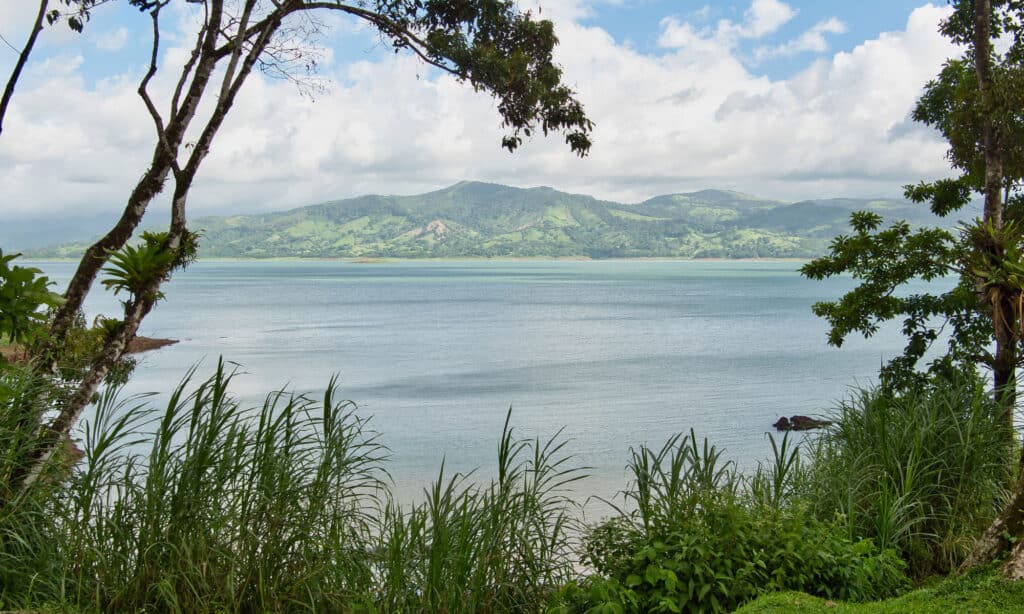
Costa Rica’s largest lake is Lake Arenal, which is known for some of the most amazing windsurfing.
©iStock.com/Judith Engbers
Lake Arenal is in northern Costa Rica near the towns of Arenal and Tonadora. On the eastern side of the lake sits the Arenal Volcano! Interestingly, in the late 1970s they wanted to make the lake bigger by adding a hydroelectric dam, but this would mean the areas where Arenal and Tonadora were would be flooded. They decided it would be worth it and moved both towns to the north east part of the lake. The dam created a new lake that was three times bigger than the old one. Now the hydroelectric dam provides 12% of the electricity for Costa Rica! The lake is a recreational lake and known for its amazing windsurfing. The best fishing is for rainbow bass (called guapote locally), which get to be 3-10 pounds, with a 12 lbs 9 oz one holding the record in Costa Rica!
7. Lake Peten Itza, Guatemala — 38 mi²
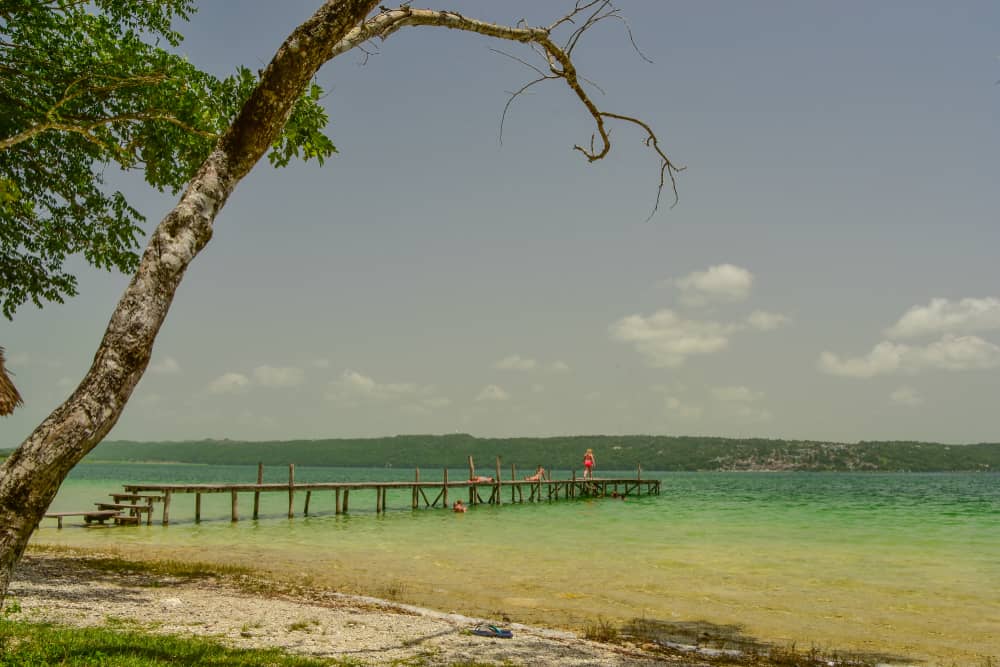
Lake Peten Itza is the third-largest lake in Guatemala.
©PrakichTreetasayuth/Shutterstock.com
Lake Peten Itza is around 160 miles northeast of Guatemala City in the northern part of the country. It is surrounded by tropical rainforests with howler monkeys, jaguars, ocelots, lizards and macaws. The lake itself has an island, the San Andres Island, which is where the town of Flores is located. The island can be accessed by a causeway and has several hotels and restaurants. Lake Peten Itza is 22 miles long and 10 miles from north to south. It has a unique system of draining underground vs having tributaries draining into surrounding rivers as an outlet.
6. Lake Atitlan, Guatemala — 50 mi²
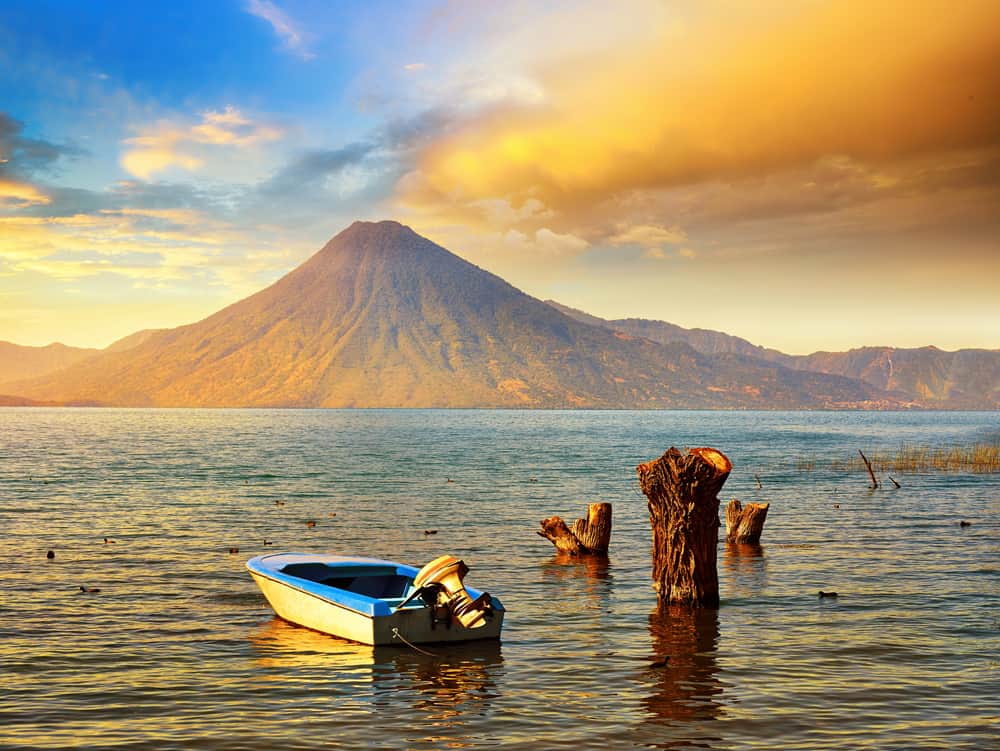
Beautiful sunsets can be enjoyed at Lake Atitlan near the volcano.
©soft_light/Shutterstock.com
This lake is not only in a volcanic crater, it is also surrounded by volcanoes. There are three large volcanoes (nicknamed “The Three Giants”) that sit on the shores of the lake. The color of the lake is known to change with the seasons from a green to a deep blue green. Lake Atitlan is the deepest lake in Central America being 341 meters (1,118 feet) deep. While much of the area surrounding the lake is dense forests where you can find the national bird the Quetzal, there is the city of Panajachel, with a thriving market area. Santa Cruz la Laguna and San Pedro are two other towns on the lake that tourists love to visit. You can take a water taxi across the lake to visit other towns or go for a boat ride. There are also areas where you can cool off with a swim.
5. Bayano Lake, Panama — 136 mi²
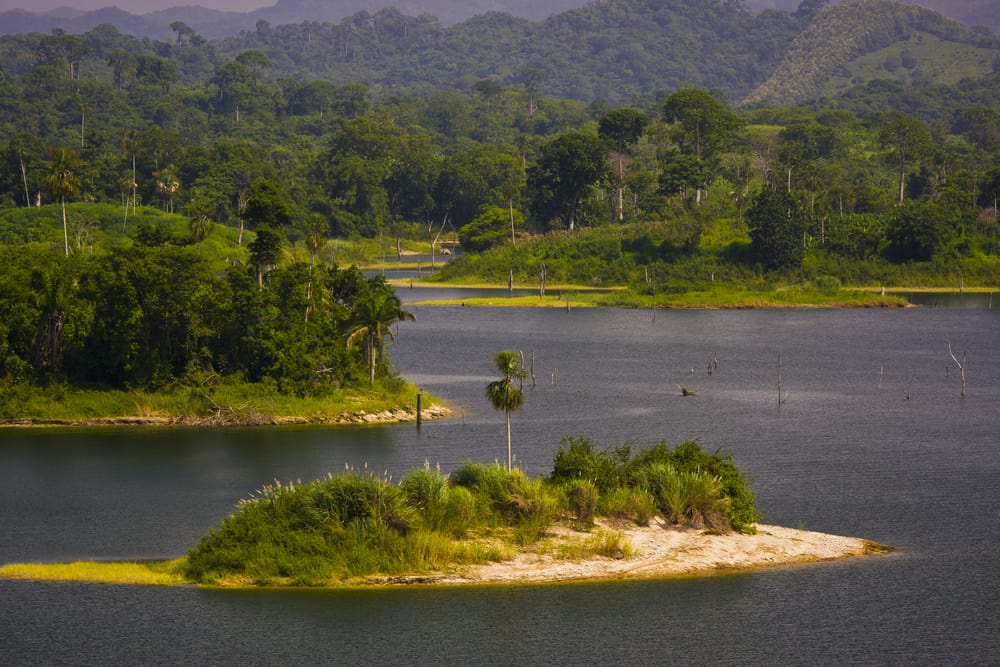
Bayano Lake was created in 1976 with the damming of the Bayano River.
©Rob Crandall/Shutterstock.com
Bayano Lake is a reservoir in Panama, about an hour-and-a-half east of Panama City. It was created in 1976 with the damming of the Bayano River flooding 135 square miles. However, this was a highly controversial plan because there were several communities of indigenous people living in the proposed flood area. The Guna and Emberá communities were forced to relocate. The lake that was created by the dam is now the second largest lake in Panama. One of the unique features of the lake is the caves. There is one main cave that tourists can visit that is 1.5 miles long, you can take a boat all the way in and look for the colony of bats that lives there as well!
4. Gatun Lake, Panama — 164 mi²
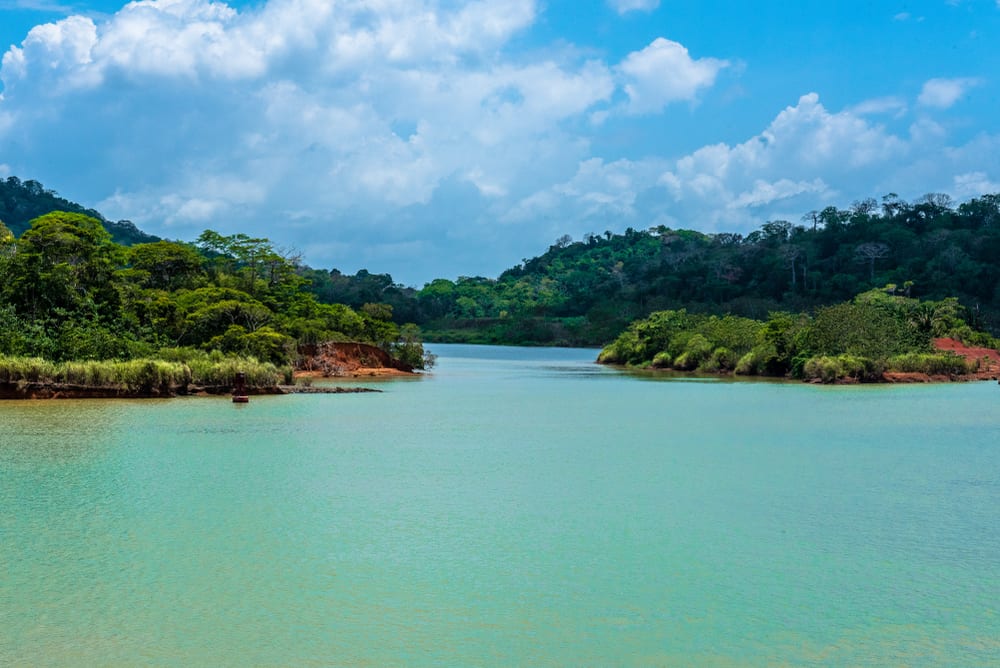
A very narrow passageway lies ahead on Gatun Lake in the Panama Canal complex.
©Joe Benning/Shutterstock.com
Gatun Lake is another human-made lake in Panama that is part of the Panama canal system. It holds extra water to be used during dry periods to maintain the levels in the locks. There are a variety of forested islands on the lake including Guacha Island which is a wildlife sanctuary. Along the shores of Gatun lake and in the bays you can watch for howler monkeys, capuchin’s, spectacled caimen and river turtles.

3. Lake Izabal, Guatemala — 227 mi²
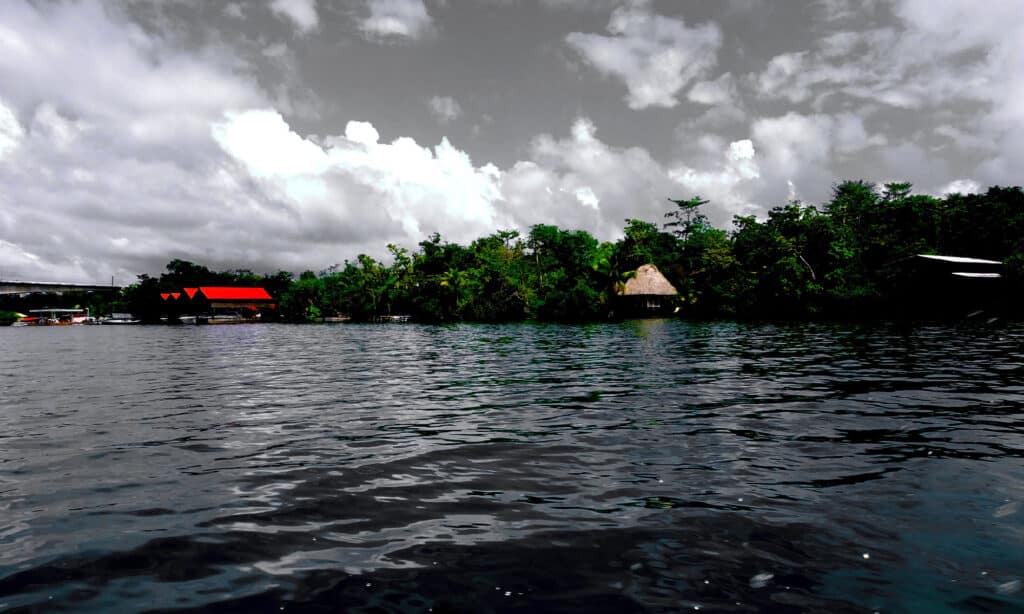
One of the eight largest lakes in Central America is Lake Izabel in Guatemala.
©iStock.com/giovannibussu
Lake Izabal is the largest lake in Guatemala at 227 square miles. It is located in the northeastern part of the country and is 30 miles long by 15 miles wide. The San Felipe fort is a national landmark that dates back to 1652, being used as protection from pirates. There are sunken ships just off the shores from battles long ago. On the north shore of the lake there is a “warm waterfall” that flows from the hot springs at Finca El Paraíso. On the western edge of the lake is the Bocas del Polochic Wildlife Preserve where you can find manatees, crocodiles, tapir and jaguars. You will be sure to see local fisherman casting their nets to provide food for their families and to sell in the market. The lake is used for boating, swimming and sailing as well.
2. Lake Managua, Nicaragua — 395 mi²
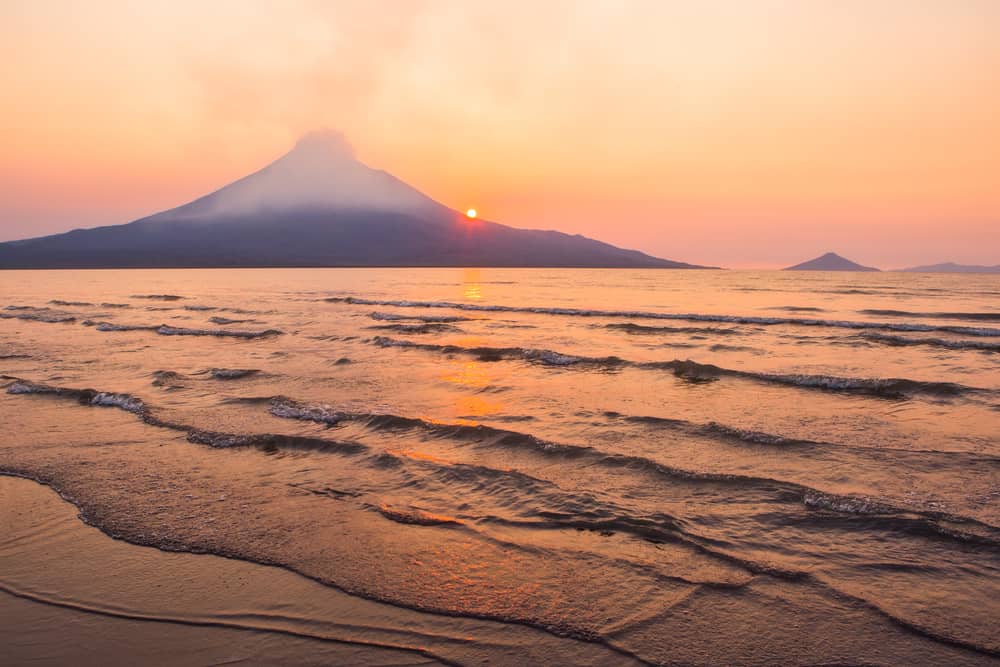
Misty golden sunrises can be seen over Momotombo Volcano and Lake Managua.
©Elena Simona Craciun/Shutterstock.com
Lake Managua is the second-largest lake in Central America and it is close to Lake Nicaragua. It is located in western Nicaragua and is 36 miles wide and 16 miles from north to south. It actually drains into Lake Nicaragua through the Tipitapa River. The capital of Nicaragua, Managua, sits on the southern shore of the lake, so it plays an important role in the economy of the country.
1. Lake Nicaragua, Nicaragua — 3,191 mi²
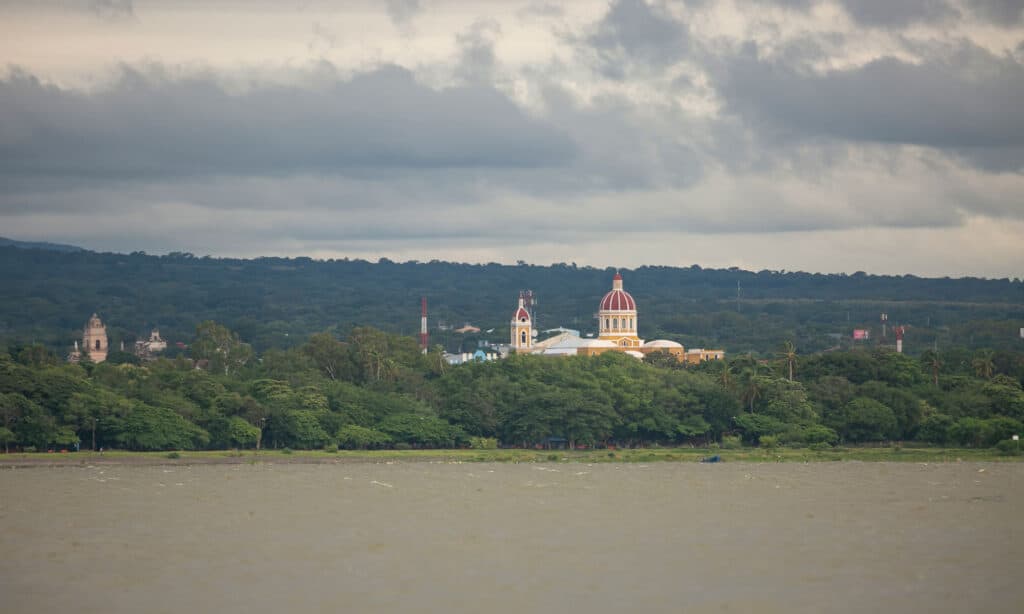
Lake Nicaragua is the largest lake in Central America and the second-largest lake in all of South America.
©iStock.com/FARUK BUDAK
The largest lake in Central America is Lake Nicaragua. It is significantly larger than Lake Managua and is actually the second-largest lake in all of South America. This oval lake is 110 miles long and 36 miles wide. It is smaller than Lake Michigan, which is 321 miles long and 118 miles wide, but still a large body of water. One of the amazing features of Lake Nicaragua is a chain of volcanoes that run through the middle of the lake creating a series of islands. One of the islands has two volcanoes that you can hike up to the top and get great views of the surrounding area.
Birdwatching is also very popular in and around the lake. What is really amazing is that this lake has sharks! Real bull sharks that used to live in the ocean have now acclimated to the lake and new populations continue to breed. There are also swordfish and tarpon that are typically only found in the ocean. What an amazing lake!
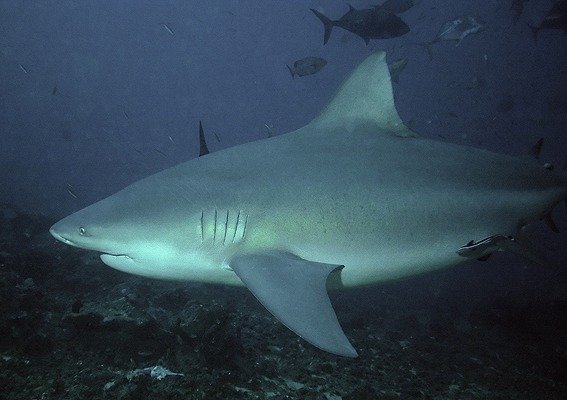
Bull sharks live in this freshwater lake and can get to be 7-12 feet long!
©Pterantula, CC BY-SA 3.0, via Wikimedia Commons – License
Summary of the 8 Largest Lakes in Central America
Here’s a recap of the eight biggest lakes located in Central America that we took a look at.
| Rank | Lake | Location | Size |
|---|---|---|---|
| 1 | Lake Nicaragua | Nicaragua | 3,191 mi² |
| 2 | Lake Managua | Nicaragua | 395 mi² |
| 3 | Lake Izabal | Guatemala | 227 mi² |
| 4 | Gatun Lake | Panama | 164 mi² |
| 5 | Bayano Lake | Panama | 136 mi² |
| 6 | Lake Atitlan | Guatemala | 50 mi² |
| 7 | Lake Peten Itza | Guatemala | 38 mi² |
| 8 | Lake Arenal | Costa Rica | 33 mi² |
The photo featured at the top of this post is © Simon Dannhauer/Shutterstock.com
Thank you for reading! Have some feedback for us? Contact the AZ Animals editorial team.






